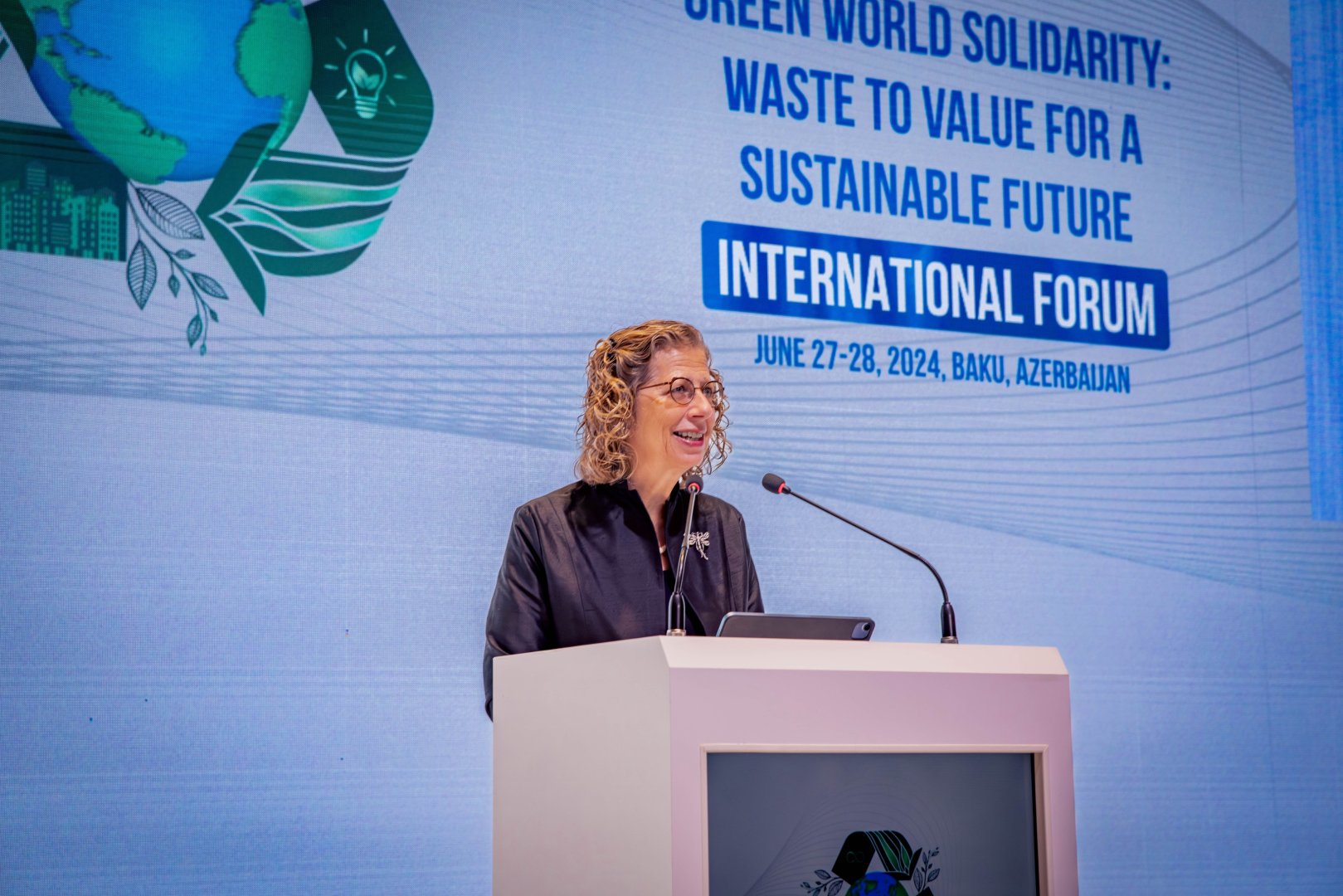BAKU, Azerbaijan, October 28. Inger Andersen, Executive Director United Nations Environment Program (UNEP), urges to use COP29 to be held in Azerbaijan this November, to increase action now, Trend reports via UNEP’s Emissions Gap Report 2024.
“I urge every nation: no more hot air, please. Use COP 29 in Baku, Azerbaijan to increase action now, set the stage for dramatically stronger nationally determined contributions (NDCs), and then go all out to get on the 1.5°C pathway by 2030. The sooner we strike out hard for a low-carbon, sustainable and prosperous future, the sooner we will get there – which will save lives, save money and protect the planetary systems upon which we all depend,” she noted.
Andersen believes that nations must accelerate action now, show a massive increase in ambition in the new pledges and then deliver urgently with policies and implementation.
“If they do not, the Paris Agreement target of holding global warming to 1.5°C will be dead within a few years and 2°C will take its place in the intensive care unit. The 2024 edition of UNEP’s Emissions Gap Report shows how much higher nations must aim. To get on a least-cost pathway for 1.5°C, emissions must fall 42 per cent by 2030, compared with 2019 levels. For 2°C, emissions must fall 28 per cent by 2030. Looking out to 2035 – the next milestone after 2030 to be included in NDC targets – emissions must fall 57 per cent for 1.5°C and 37 per cent for 2°C,” the executive director explained.
Andersen went on to add that as greenhouse gas emissions rose to a new high of 57.1 gigatons of carbon dioxide equivalent in 2023, the cuts required from today are larger; 7.5 per cent must be shaved off emissions every year until 2035 for 1.5°C.
“Current promises are nowhere near these levels, putting us on track for best-case global warming of 2.6°C this century and necessitating future costly and large-scale removal of carbon dioxide from the atmosphere to bring down the overshoot. However, this report shows that it remains at least technically possible to get on a 1.5°C pathway. Increased deployment of solar photovoltaic technologies and wind energy could deliver 27 per cent of the total emission reduction potential in 2030 and 38 per cent in 2035. Action on forests could deliver around 20 per cent of the potential in both years. Other strong options include efficiency measures, electrification and fuel switching in the buildings, transport and industry sectors,” noted UNEP’s executive director.
To deliver, the world would need a whole-of-government approach, measures that maximize socioeconomic and environmental co-benefits while reducing trade-offs, and a minimum sixfold increase in mitigation investment – backed by reform of the global financial architecture and strong private-sector action, she said.
Andersen noted that G20 members, particularly the largest emitters, would need to do the heavy lifting, as they dominate the world economy.
“Essentially, we would need global mobilization on a scale and pace never seen before. Many will say this is impossible. But to focus solely on whether it is possible misses one crucial point: the transformation to net-zero economies must happen, and the sooner this global transformation begins the better. Every fraction of a degree avoided counts in terms of lives saved, economies protected, damages avoided, biodiversity conserved and the ability to rapidly bring down any temperature overshoot,” she added.
This November, Azerbaijan will host COP29. This decision was made at the COP28 plenary meeting held in Dubai on December 11 last year.
The United Nations Framework Convention on Climate Change is an agreement signed at the Earth Summit in Rio de Janeiro in June 1992 to prevent dangerous human interference with the climate system. COP—the Conference of the Parties—is the highest legislative body overseeing the implementation of the Framework Convention on Climate Change. There are 198 countries that are parties to the Convention. Unless the parties agree otherwise, the COP is held annually. The first COP event took place in March 1995 in Germany's Berlin with its secretariat in Bonn.
Follow the author on X: @Lyaman_Zeyn







